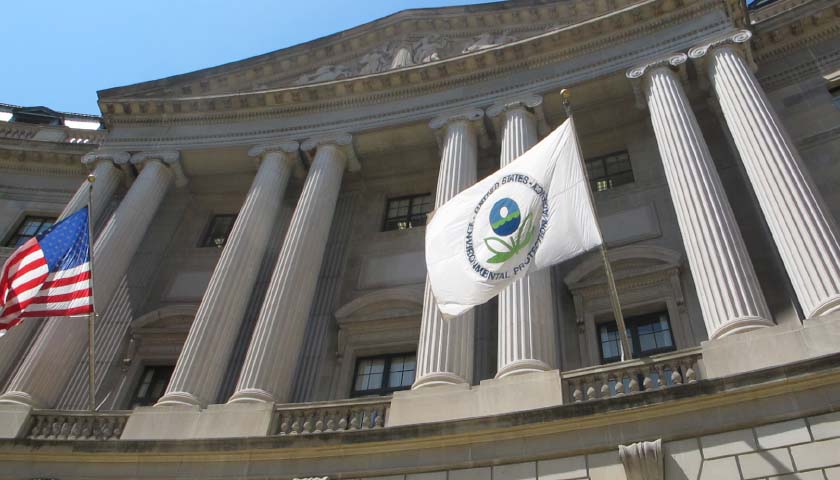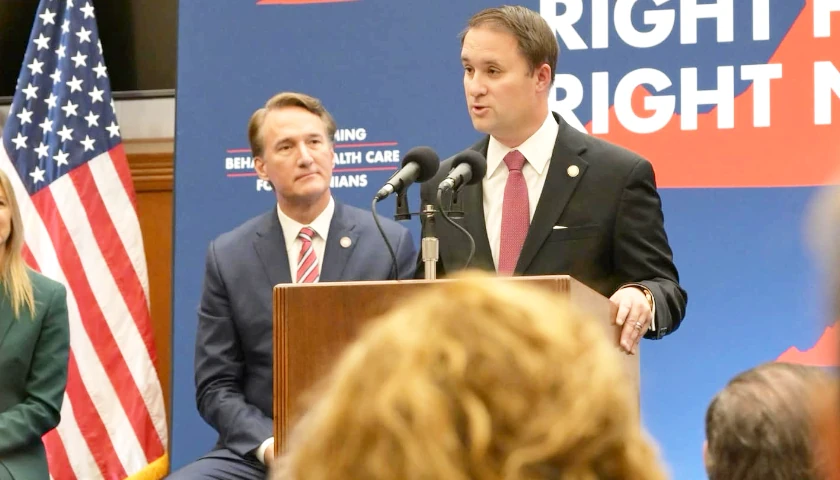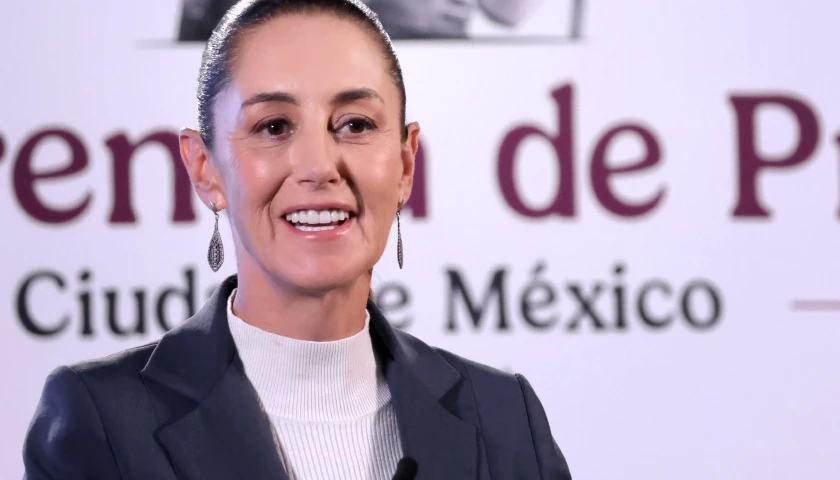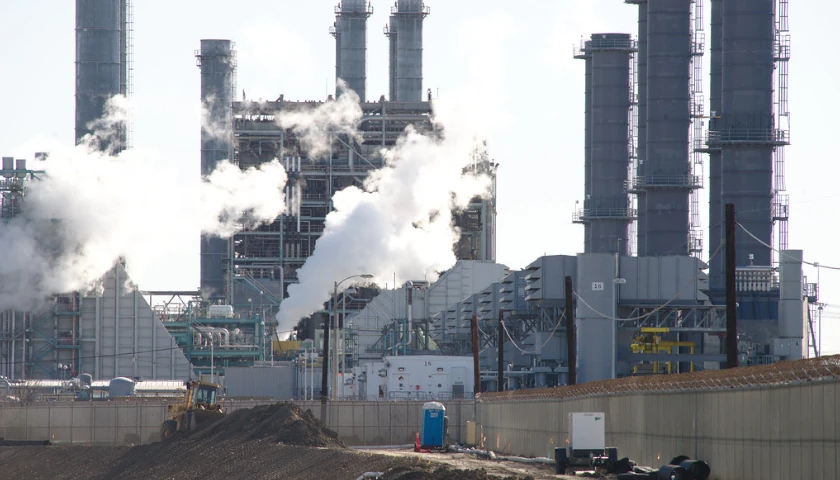by Jason Isaac
Carbon capture is like burning witches.
In the 15th to 17th centuries, the elite in Europe and the United States believed that “evil humans were negatively affecting the climate and weather patterns.” The people were demanding something — anything — be done about famine and crop failure. There must be consequences, facts be damned, so inconvenient women on the fringes of society were labeled “witches” and burned at the stake in droves.
Of course, you and I, with the benefits of hindsight and a decent education, know that burning witches had no effect on the weather whatsoever. It was cruel and fruitless, and its only benefit was making people feel good about themselves. Something, at least, was being done.
 Fast forward to 2023, it seems the United States has sold out to the net-zero fantasy. Legions of celebrities, influencers and politicians are crying for a magical, turn-key solution to climate change.
Fast forward to 2023, it seems the United States has sold out to the net-zero fantasy. Legions of celebrities, influencers and politicians are crying for a magical, turn-key solution to climate change.
The Environmental Protection Agency (EPA) now plans to unilaterally mandate carbon capture for all natural gas and coal power plants — an act of bureaucratic overreach that, because of its exorbitant cost, will force many of our most reliable electric generators to close. The modern elite turn up their noses at the legions of the unenlightened, with their gas-guzzling trucks and single-use plastics, surely the cause of all our problems.
If we could just get rid of all that CO2, climate change would be solved, right?
But net-zero is as nonsensical — and as evil — as the sham witch trials of the Middle Ages.
Here’s why it’s nonsense. Capturing even half of U.S. carbon dioxide emissions would require capturing, transporting and storing 50 trillion cubic feet of gas annually, which is more than the 34 trillion cubic feet of natural gas the United States produces each year.
To put this in perspective, just one trillion cubic feet, a quantity generously described as “out of the grasp of human imagination,” would wrap around the equator in a 30-by-30-foot band three times.
It’s also nonsense because even the absolute best-case carbon capture scenario would result in, if you’ll forgive my scientific jargon, diddly squat. If the United States eliminated every molecule of greenhouse gas emissions by 2030, the global temperature difference at the end of the century would be less than 0.2°C. And that’s if the data models used by the climate wing are accurate — which they’ve never been to date. They’ve overestimated warming every single time.
Even the most successful decarbonization does nothing to mitigate a changing climate. So why are so many corporations buying into the sham? From chocolate to crafts to even fossil fuels themselves, it seems like every big brand is preaching about carbon dioxide.
Unfortunately, it’s not out of the goodness of their hearts. It’s not even because sustainability pledges make affluent consumers feel warm and fuzzy. It’s because of cold, hard cash.
Much of that money comes from the government (which, of course, means from our own pockets through tax dollars). The Inflation Reduction Act increased the federal handout for carbon capture from $50 per ton to $85 per ton and allowed direct cash payments.
It allows up to $180/ton for capturing carbon directly from the air instead of from a power plant. Even the Biden EPA, using a lot of fuzzy math, has so far only managed to peg the average social cost of carbon at around $51/ton, so why are we paying up to three times that much to capture and bury it?
While subsidies act as a carrot to incentivize corporations to go woke, businesses also have to fear the stick — that’s Wall Street. Woke capital has almost total control over the world’s wealth, with big name investment firms like BlackRock pressuring companies that don’t kowtow to the progressive political agenda.
Last year, BlackRock voted against 176 directors for “climate-related concerns.” Responsible American energy producers face denial of service and limited access to the capital and insurance they need to function at best, termination of existing contracts at worst.
Environmental, Social and Governance (ESG) is nearly universal now, and it’s bullying corporate boardrooms into engaging in political posturing. In fact, almost three-quarters of S&P 500 companies now base C-suite paychecks on ESG. And it’s no wonder, when they face the threat of losing banking and investment services they need to make their bottom line.
And yet, as described in the data above, the anti-fossil fuel movement would have almost no effect on climate change.
Sadly, the modern climate industrial complex is almost entirely driven by greed for the other type of green.
Since traveling by broom isn’t possible and cooking with a cauldron over an open fire is tricky, the best path forward for our planet and those who live on it is to embrace a high-carbon lifestyle and work to help others achieve it. Affordable, reliable energy translates to economic prosperity, which translates to environmental stewardship.
We’ve come a long way since the Middle Ages, but, without energy, we would fall right back into them. Let’s abandon the sham of carbon capture and instead focus on fighting poverty and reducing barriers to the affordable, reliable energy that powers our modern lives.
The people’s elected leaders in Congress must put a stop to the EPA’s madness by reforming the Clean Air Act to restrain the EPA’s powers and force it to focus on its job of protecting public health and welfare.
– – –
Jason Isaac is the Director of Life:Powered, a national initiative of the Texas Public Policy Foundation. He previously served four terms in the Texas House of Representatives.
Photo “U.S. Environmental Protection Agency” by NRDC pix. CC BY 2.0.









Yet Eco elites wont drive EVs